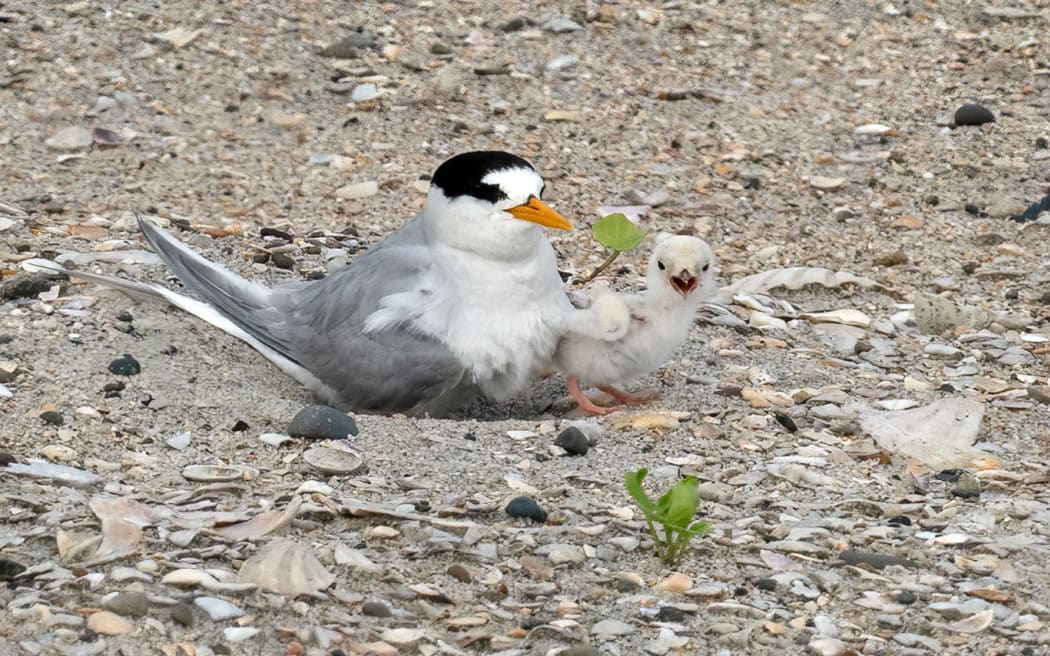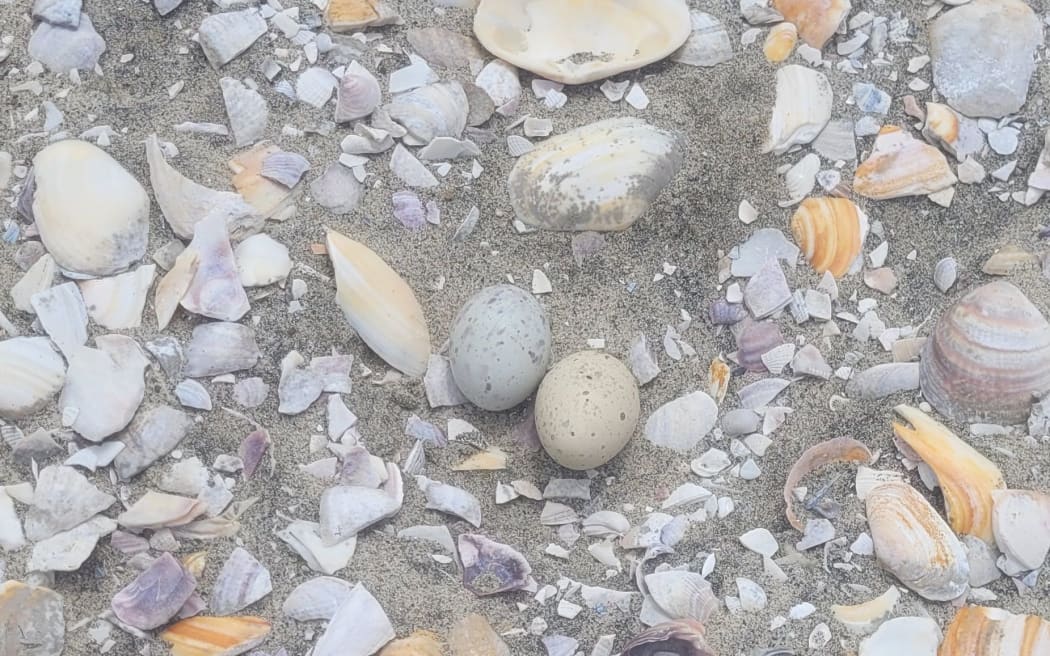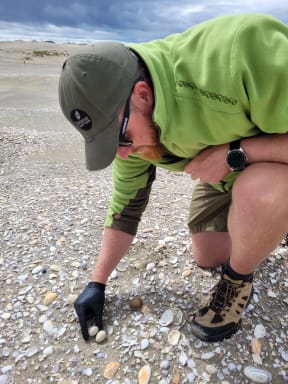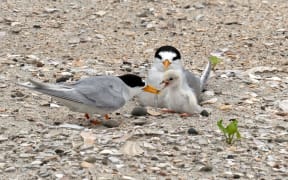
A tara iti chick steps briefly out of its nest at Waipū to explore. Photo: Supplied / Darren Markin
Conservationists have been using 3D printed replica eggs to help an endangered species survive the summer.
The Department of Conservation (DOC) said the eggs were so close to the real thing that the birds were completely oblivious when staff swap them out.
The programme was put in place to help the eggs of the endangered tara iti / fairy tern survive during storms and high tides.
Staff would remove the eggs, take them to incubators at Auckland Zoo, and leave the terns to continue incubating what they thought were their eggs.

Fairy tern / tara iti egg (left) and 3D printed dummy egg (right) used in the nest protection programme. Photo: Supplied / DOC
Initially DOC used hand-painted wooden eggs, then real eggs with hollow centres filled with wax.
The eggs cracked after a while so it turned to 3D printing.

Ranger Harry Haywood putting 3D eggs into a tara iti nest. Photo: DOC / Shannah Courtenay
Last year it got funding from the Endangered Species Foundation (ESF) Tāngaro Tuia te Ora and commissioned Shaun Lee to produce 3D replica eggs, which were then hand painted by artist and marine biologist Carina Sim-Smith.
The replica eggs were designed to match the shape, weight, UV resistance, size, colour, and texture.
DOC biodiversity ranger for Whangārei Ayla Wiles said the eggs "allow us to improve productivity and save nests without losing real eggs in the process".
ESF general manager Natalie Jessup said: "We were happy to see the replacement eggs were successful at holding nesting sites during risky periods when the real eggs were safely cared for at Auckland Zoo - they were so realistic parent birds had no idea they were not sitting on the real thing."
The conservation programme has had a record-breaking breeding season with 22 eggs laid and 14 chicks successfully hatched.
The tara iti, which was once widespread, now breeds at only five main nesting sites from in north Auckland; Papakānui Spit, Pākiri Beach, Waipū and Mangawhai sandspits, and Te Ārai Stream mouth.




